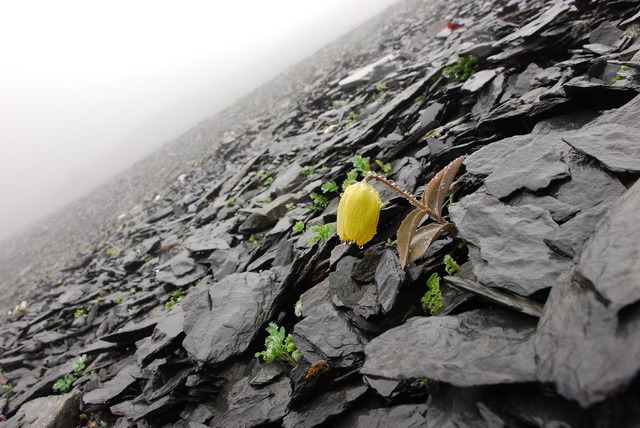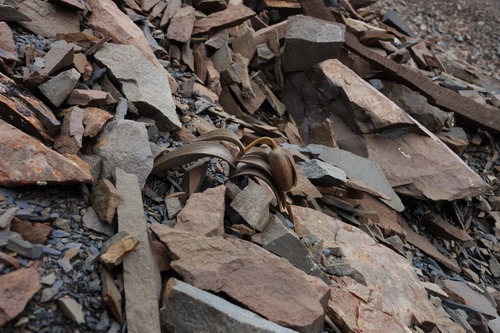Camouflaged fritillary still attracts pollinators

Flowers of the Chinese fritillary Fritillaria delavayi can be as brown or grey as the stony soil. But there are still pollinators that manage to find them, Tao Huang and colleagues show.
At high altitudes in the Hengduan Mountains in southwest China, plants grow on bare, stony soil. Green leaves are very noticeable here, and to escape from herbivores such as caterpillars, many plant species have developed an unusual brown or grey leaf colour that matches the background. An example is Corydalis hemidicentra.
The fritillary Fritillaria delavayi goes one step further than other plant species: in some places not only the leaves, but also the flowers are stone-coloured. Tao Huang and colleagues wondered whether pollinators could find such camouflaged flowers.
Lung diseases
Fritillaria delavayi is a perennial bulb plant that may have regular green leaves and a bright yellow flower. It grows at an altitude of 3700 to 5600 meters. It is easy to see why this fritillary took on camouflage colours in many places. The small bulbs are used in traditional Chinese medicine, because they contain substances that are beneficial for lung diseases. There is a great demand for them. The plant is difficult to grow because it requires cold and dry air. And so, bulbs are dug out in accessible places.
In such places the plant developed a stone-coloured appearance. Brown or grey plants are not noticeable, especially if also the flower is brown or grey. But the flowers must be detectable by pollinators, that transfer pollen from one flower to the pistil of another. The flowers cannot fertilize themselves.
Field observations show that two species of bumblebees come to yellow flowers to collect nectar, pollinating the flowers in the process. But they cannot perceive brown or grey flowers, so they do not visit them. How can these flowers be pollinated?
Frequent visits
By other insects, it turns out. The camouflaged flowers of Fritillaria delavayi attract three species of the Anthomyiidae fly family. The flies are looking for nectar and pollen and sometimes mate within the flowers. They do not perceive brown or grey flowers any better than bumblebees do, but they are attracted to the smell. Huang shows that the camouflaged flowers are smaller than the yellow ones, an adaptation to the small bodies of the flies. The flies are less efficient pollinators than bumblebees, but this is compensated for by more frequent flower visits.
As a result, stone-coloured flowers set seed just as well and produce as many seeds as yellow ones. This means that camouflage is not at the expense of reproduction. And camouflaged flowers do indeed protect the plant from human collectors, according to previous research with slides: people clearly have more difficulty finding brown or grey flowers than yellow ones.
Willy van Strien
Photos:
Large: Fritillaria delavayi with brown leaves and yellow flower
Small: Fritillaria delavayi with brown leaves and brown flower
©Yang Niu
See also: Corydalis hemidicentra with cryptic leaf colour
Sources:
Huang, T., B. Song, Z. Chen, H. Sun & Y. Niu, 2024. Pollinator shift ensures reproductive success in a camouflaged alpine plant. Annals of Botany, 9 May online. Doi: 10.1093/aob/mcae075
Niu, Y., M. Stevens & H. Sun, 2021. Commercial harvesting has driven the evolution of camouflage in an alpine plant. Current Biology 31: 446-449. Doi: 10.1016/j.cub.2020.10.078
